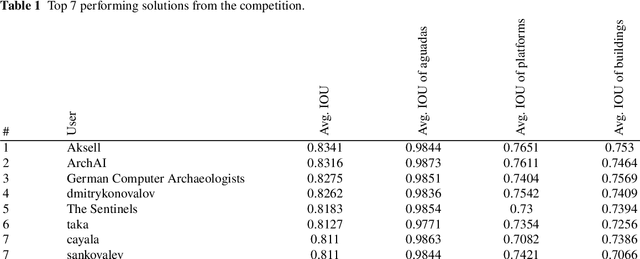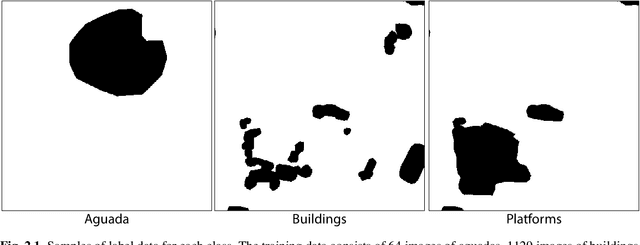Žiga Kokalj
Tranfer Learning of Semantic Segmentation Methods for Identifying Buried Archaeological Structures on LiDAR Data
Jul 20, 2023Abstract:When applying deep learning to remote sensing data in archaeological research, a notable obstacle is the limited availability of suitable datasets for training models. The application of transfer learning is frequently employed to mitigate this drawback. However, there is still a need to explore its effectiveness when applied across different archaeological datasets. This paper compares the performance of various transfer learning configurations using two semantic segmentation deep neural networks on two LiDAR datasets. The experimental results indicate that transfer learning-based approaches in archaeology can lead to performance improvements, although a systematic enhancement has not yet been observed. We provide specific insights about the validity of such techniques that can serve as a baseline for future works.
Discover the Mysteries of the Maya: Selected Contributions from the Machine Learning Challenge & The Discovery Challenge Workshop at ECML PKDD 2021
Aug 09, 2022



Abstract:The volume contains selected contributions from the Machine Learning Challenge "Discover the Mysteries of the Maya", presented at the Discovery Challenge Track of The European Conference on Machine Learning and Principles and Practice of Knowledge Discovery in Databases (ECML PKDD 2021). Remote sensing has greatly accelerated traditional archaeological landscape surveys in the forested regions of the ancient Maya. Typical exploration and discovery attempts, beside focusing on whole ancient cities, focus also on individual buildings and structures. Recently, there have been several successful attempts of utilizing machine learning for identifying ancient Maya settlements. These attempts, while relevant, focus on narrow areas and rely on high-quality aerial laser scanning (ALS) data which covers only a fraction of the region where ancient Maya were once settled. Satellite image data, on the other hand, produced by the European Space Agency's (ESA) Sentinel missions, is abundant and, more importantly, publicly available. The "Discover the Mysteries of the Maya" challenge aimed at locating and identifying ancient Maya architectures (buildings, aguadas, and platforms) by performing integrated image segmentation of different types of satellite imagery (from Sentinel-1 and Sentinel-2) data and ALS (lidar) data.
 Add to Chrome
Add to Chrome Add to Firefox
Add to Firefox Add to Edge
Add to Edge